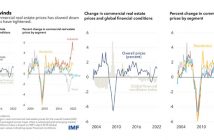(Sophie and David Rosell with Cambodia kids | Photo courtesy of Rosell Wealth Management
Last year my daughter Sophie studied the horrific Cambodian Killing Fields in her high school class. She learned about the estimated two million people were tortured and buried by the Khmer Rouge regime and their brutal dictator Pol Pot from 1975 to 1979. This state-sponsored genocide is considered one of the world’s largest after the Holocaust.
Sophie will be off to college next year and I had always visualized a father/daughter trip before this momentous occasion. Even though she has always showed an interest in traveling the Third World, as she has heard so many stories from her dad’s escapades, I must admit I was surprised when she informed me she wanted to visit the ominous Killing Fields. This past November she and I set off for Cambodia with our tiny packs on our back for what would be one of the most meaningful self-guided trips of my life.
It was a journey that neither one of us will ever forget! Together we experienced an emotional rollercoaster from overwhelming sadness of the fields and prisons to the joy of meeting the friendly people, viewing Angkor Wat and my daughter and I learning so much more about each other.
The first leg of our trip took us to Bangkok. Even though Thai Airlines are considered one of the most respected and high-quality airlines in the world, our flight across the open sea was turbulent to say the least! At times it felt unsettling and downright scary. But, we certainly didn’t jump out of the plane just because it was shaking. While some passengers may have even worried about a crash, I knew the pilots were using every available data point, measurement, and expert to find the safest path to our destination. The unpleasantness calmed as we arrived safely to Bangkok — the exact location we intended to go.
I share this experience with you as it may help you remove some of the emotions you may be feeling as you contemplate the current market environment. I encourage you to consider the airline turbulence that Sophie and I experienced. In a similar manner to our Thai pilots, financial advisors track this current turbulence and how it relates to you. No matter what lies ahead, working with such a team of professionals to pilot you through can make a world of difference. I’d like to share with you a brief market update along with some historic information as I find that this type of information is powerful in providing greater perspective.
2018 Recap:
As we all know, investment markets finished 2018 on a sour note, with the S&P 500 dropping 10 percent in the last four weeks of the year. Many investors are struggling to remember the last time investment markets delivered a negative calendar year return, as U.S. stocks have been riding a bull stock market for almost a decade.
The prolonged bull market in U.S. stocks, the extremely low volatility of 2017 and the softening of the Bend real estate markets have made 2018 feel like a splash of cold water. It is important for investors to note, however, that 2018 was more “normal” than 2017. Investment markets, and the underlying economies, are expected to experience natural cycles over time. Trees don’t grow to the sky and asset prices typically don’t go to zero. While our minds tend to recognize trends and expect them to continue indefinitely, the natural oscillations of investment markets are the norm, rather than the exception.
Risk aversion is an essential part of investing. Investors, by nature, are risk-averse and the collective risk aversion of investors is what makes markets safe. However, it is risk aversion which makes us dislike experiencing the expected downward slope of the cycle, even though rational investors understand markets that benefited from abnormal appreciation are more likely to experience a cyclical correction than to grow to the sky.
It has been said that investing is simple, but not easy. Hopefully, the following five key thoughts will be helpful to you in the new year and serve as a useful tool to make sense of current markets and help you make informed decisions moving forward into 2019.
1) Most Equity Investments were in the Red in 2018
Investment results for 2018 will be confusing for some investors. While the S&P 500 was down about 4.4 percent for the year, it was still one of the best performing global indexes in 2018. Therefore, most diversified portfolios under-performed the S&P 500 in 2018. Bonds rallied in 2018 which provided diversification for balanced portfolios. I’m a firm believer that investors need stocks to live well and bonds to sleep well and it’s about finding the right balance.
2) Market Drawdowns are normal
Since volatility has been tepid for so long, some investors may perceive market movements in 2018 to be extreme. However, the draw-down we experienced at the end of the year is quite normal. Actually, 2017 was the extreme year.
– Maximum draw-down YTD 2018: -20 percent
– Maximum draw-down 2017: -3 percent
– Average maximum draw-down since 1928: -16 percent
– Median maximum draw-down since 1928: -13 percent
This year, investors should have some déjà vu. According to Charles Schwab, the average S&P 500 draw-down in a midterm election year is -16.0 percent. The average 12-month gain from that trough has been +32.0 percent. We are now down -14.3 percent from the September 21st high.
3) Recessions are to be Expected
With the end of year market decline, investors have been turning more attention to the prospect of a recession on the horizon for the United States. Recessions are defined as a fall in gross domestic product (GDP) for two consecutive quarters. It has proven very difficult historically to predict the exact time period a recession will occur. Likewise, trying to time in and out of the market to avoid potential recessionary stock pullbacks has proven to be very difficult as well.
Recessions are a normal part of economic cycles. While bear markets in stocks occur more frequently, there have been eight recessions since 1960. Recessions have lasted one year on average. Over the nearly 60-year period, the economy is in recession 13 percent of the time. Likewise, we have had at least one recession every decade for the last five decades. This frequency of recessions is normal. I do not advocate trying to time in and out of the market to avoid recessions. Instead, I support maintaining a disciplined strategic investment strategy.
4) Investment Cycles are Normal
We have experienced a prolonged market cycle recently, where large cap growth stocks have been a top performer. Without caution, investors may succumb to recency bias given the recent cycle. Simply put, recency bias can be defined as most easily remembering something that has happened recently, compared to remembering something that may have occurred a while back. Recency bias can lead investors to question fundamental investment disciplines, such as diversification. Instead of remaining disciplined, temptation may rise to concentrate allocations towards investments which have recently outperformed. It is absolutely normal to experience multi-year cycles where certain asset classes outperform consistently, only to reverse course in the following cycle. It reminds me of Central Oregon weather where two winters ago we experienced record snows as roofs collapsed and schools were closed for almost two weeks. Last year and so far this year we are experiencing little to no snow in town.
Conclusion: Focus on Financial Goals
Often, investment portfolios are the focus of an investor’s financial picture. While investment portfolios are an integral part of the overall financial picture, I encourage investors to keep focus on their long-term financial goals. Investment portfolios are a sophisticated tool designed to help investors reach their financial goals, not a bank account for short-term cash needs.
Additionally, volatility is expected in investment portfolios and necessary to allow for long term investment appreciation. As mentioned, investors are risk-averse in nature, meaning they don’t like to see portfolio values fluctuate. However, it is a normal part of the investment process.
I hope your 2019 is off to a wonderful start.
The material contained in the ’Market Commentary’ section is for informational purposes only and is not intended to provide specific advice or recommendations for any individual. The information provided has been derived from sources believed to be reliable, but is not guaranteed as to accuracy and does not purport to be a complete analysis of the material discussed, nor does it constitute an offer or a solicitation of an offer to buy any securities, products or services mentioned. Past performance is not indicative of future results. Diversification cannot assure profit or guarantee against loss. Performance of an index is not illustrative of any particular investment. It is not possible to invest directly in an index. Investment advisory services offered through Valmark Advisers, Inc. an SEC Registered Investment Advisor Securities offered through Valmark Securities, Inc. Member FINRA, SIPC 130 Springside Drive, Ste 300 Akron, Ohio 44333-2431. 800-765-5201. Rosell Wealth Management is a separate entity from Valmark Securities, Inc. and Valmark Advisers, Inc.
rosellwealthmanagement.com





